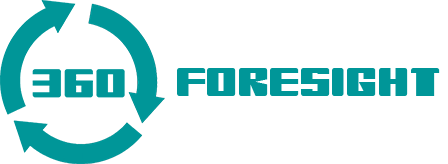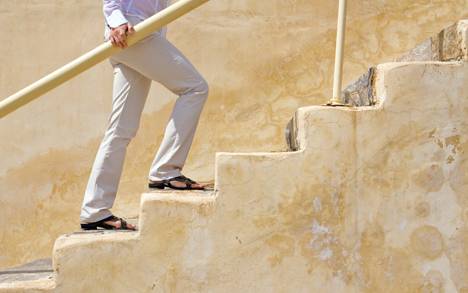Say your organisation has decided to do a scenario planning project on one of their strategic topics. And now you are in charge of designing the project outline. How to do this? What is a good approach? Most organisations don’t do scenario planning on a regular basis. Each time there is experimentation involved in designing the project in order to achieve the most impact. Here I am outlining twelve steps that I find crucial for a successful scenario planning project. I am focusing on how to involve the right people, how to create relevant scenarios and influence on decision making and agendas. I won’t address the details on how to create the scenarios themselves, but focus on the project design that starts once the scenario question has been adopted.
1. Find an ambassador of the scenario planning project in the top of the organisation
Scenario planning is different from the day-to-day work in organisations. Most people are still unfamiliar with scenario planning as a strategic thinking tool. And people are mainly focused urgent issues and short term actions that are the core business of the organisation. This makes it difficult to get priority in the organisation for the scenario planning project. If a one of the top managers steps up as the ambassador of the project, it is much easier to keep the project on the agenda and get your sessions scheduled. Preferably, the ambassador is present at scenario building workshops and prototyping sessions. Otherwise a personal invitation message helps to give weight to the sessions.
2. In addition to a traditional literature review, make an inventory of relevant scenarios with similar topics or by similar organisations
Often there is little time to do an extensive horizon scan and analyse all developments and drivers of change. The same applies to Delphi studies and extensive research analyses. While these are very insightful activities and add solidity to your project, sometimes there are other ways to build a well-founded set of scenarios. A literature scan, not only of trends and drivers, but also of scenario projects on similar topics can provide an overview of the main drivers of change. In addition, scenarios often have a similar structure and can be seen as scenario archetypes. For instance: one scenario displays a system of global efficiency, the opposite scenario displays a system of local connectivity. Understanding these structures can be helpful as a first step in designing your own set of scenarios. Then you can decide which literature you also need to analyse as background for the scenarios. Some quantitative backing of trends and drivers can help to make the selection of main drivers more fact-based. And some organisations are more inclined towards quantitative research than others.
3. Talk with colleagues and people outside the organisation who know the subject matter and have wide overview
This generates insight in the important themes and issues to be addressed in the scenarios. Talking to a range of people, without considering the organisational hierarchy, helps to get diverse viewpoints and unexpected insights. This is needed to develop scenarios as integral systems.
4. Choose 3, 4 or 5 scenario archetypes and formulate for each of them the driving forces as a start of the scenario development
Based on the horizon scanning or on the inventory of existing projects, the first outline of scenario archetypes emerges. This is a rough outline of the scenario contours, without presenting the narrative or a system description. These are the ingredients to build a scenario. These archetypes are distinctive and represent the whole range of potential futures.
5. Organise a scenario building workshop
For this, you need: 1) thinkers from the organisation (preferably from different units), 2) stakeholders with analytic thinking powers, 3) free thinkers with a foresight mindset (for instance members of a Future Society). In addition, involving a script writer is a great advantage. This is someone with a journalistic or literary background, who can create storylines that communicate well. This person observes and takes notes during meetings. Collaboratively the script writer and the project team create the concept script.
The scenario building workshop is aimed for generating the first draft storylines and system characteristics:
- What kind of world do we have in 2040 (or another time horizon)? How did we get there? Who are the main actors? What are the consequences for the system? Which patterns emerge? What is the influence of governance, innovation and social dynamics?
6. Writing the first draft of the scenarios
Shortly after the scenario building workshop, the project team and the script writer sit down to discuss the outcome of the session and the first draft of the scenarios. Several iterations between script writer and project team should yield a version that can be shared for further elaboration.
7. Refining and adding relevance by discussing draft scenarios inside and outside the organisation
Scenarios that are tailor made to the strategic questions of the organisation have most potential to make impact. Several discussion sessions with experts help to incorporate relevant issues in the scenarios. And help to test your storylines to see their response and the conversation that is triggered. It really requires effort and a critical eye to improve the scenarios time and again.
8. Prototyping sessions to discuss draft scenarios and strategic questions with decision makers and other colleagues
These sessions, one or more, involve people who weren’t involved earlier in the process. One of the aims of these sessions is make people become more familiar with scenario planning and how it works. Being new to scenario planning generates subconscious resistance. Prototyping sessions give people the opportunity to express their concern and to learn the logic of scenario planning. From the scenario building point of view, it is again an opportunity for further fine-tuning the scenario storylines, when you see the way people read and understand them. It is one of the final moments of reflection before finalising the scenarios. Big choices, such as making one scenario looking less pessimistic or maybe even ditching one scenario entirely, need to me made at this point.
Prototyping sessions are also essential for testing your discussion questions, the questions to be addressed in the strategic conversation with decision makers. These questions are never easy ones. So it is an illusion that you can reformulate them in easy questions. At least, the questions should stir a conversation and involve the scenarios to add different dimensions into talking about solutions for large and integral questions.
Finally, prototyping sessions are good to get people talking about the scenario project and tell others what they thought about it.
9. Finalising the scenarios and creating the artwork
In collaboration with the scriptwriter, it is time to agree on a final version of the scenarios. You may have contacted the designers earlier, but now they can really start working. With sufficient amount of time and budget, a video is a great way of communicating scenarios. A well designed handout and illustrations also work very well. Other forms, such as an exposition with tangible products (mock ups), can also make people feel the scenarios and bring them in the right ambiance.
10. Scenario planning session with decision makers
This is the ultimate aim of why the scenario planning project has started in the first place. However, it is not easy to get sufficient time for a scenario conversation with top decision makers. Around two hours for a scenario conversation is a good time frame to unleash the value of this kind of strategic dialogue. It takes some time to get the right mind-set and to really understand the scenarios and think about the difficult discussion questions. This kind of conversation is relatively unusual for a group of top decision makers, but as far as I have experienced, there is often great joy in having an open conversation about strategic pathways for the future. It helps them collaboratively to see new solution spaces for some very important questions.
Traditionally, scenario planning sessions consist of three rounds to kick start a learning process and end with some overall reflection. Although each project will have its own questions, they often have this structure:
- Familiarising with the scenarios: Which elements do you recognise in real life?
- Seeing new challenges (or seeing them from a different perspective): Which challenges play a role in each scenario?
- Analysing strategic (policy) implications: Which new solution spaces do you see? And how do they work out in each scenario?
The results can further be elaborated by the project team with systematic analysis of the solutions that were identified. Again, the organisation can be consulted in this process.
11. Publication to share the insights
In addition to publishing the scenarios and the artwork, in a booklet, on a website or only internally on intranet, for the strategic learning process it is also very important to share in the organisation some of the key insights that resulted from the scenario planning process. Interviews with top decision makers added to the booklet or in a newsletter are ways to involve the organisation. Many people have participated in the scenario building process. It is important to share with them how this has influenced the management. This also keeps alive the strategic thinking of the scenario planning project.
12. Trigger leadership questions in follow up activities
Ultimately, scenario planning is about strategic leadership. The results of a scenario planning project can coincide with other strategic agendas of the organisation. New insights emerging from the scenarios can be nurturing to strategic conversations and can help to really grasp the leadership questions for the future.
Author: Freija van Duijne


